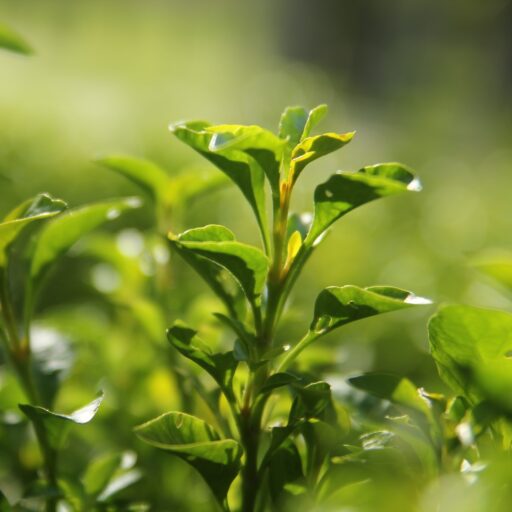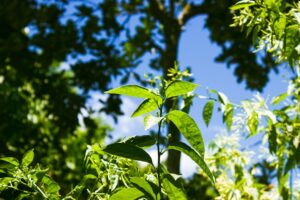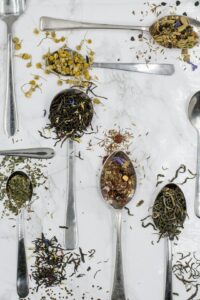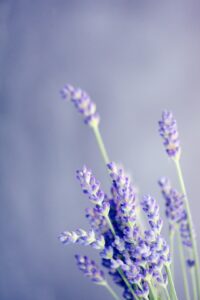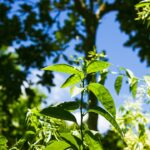Support our educational content for free when you purchase through links on our site. Learn more
[2023] How to Grow Your Own Herbal Tea: A Comprehensive Guide
Quick Answer:
Growing your own herbal tea garden is a rewarding and cost-effective way to enjoy fresh, flavorful teas. By planting a variety of herbs, you can create unique blends tailored to your taste preferences. In this guide, we’ll provide you with expert tips and advice on how to grow your own herbal tea garden, including the best herbs to plant, planting and harvesting techniques, and delicious tea recipes. So grab your gardening gloves and let’s get started!
Table of Contents
- Quick Tips and Facts
- Choosing the Right Herbs
- Preparing Your Garden
- Planting and Caring for Your Herbs
- Harvesting and Drying Your Herbs
- Brewing Delicious Herbal Tea
- FAQ
- Conclusion
- Recommended Links
- Reference Links
Quick Tips and Facts
- Growing your own herbal tea garden allows you to enjoy fresh, flavorful teas at a fraction of the cost.
- Homegrown herbs are more potent and flavorful than store-bought herbs.
- Many herbs have natural healing benefits, such as relieving stress and improving sleep.
- You can grow a tea garden in a small space, such as a garden bed, balcony, containers, or windowsill.
- Herbal teas can be enjoyed hot or cold, and you can experiment with different blends to find your favorite flavors.
Choosing the Right Herbs
When selecting herbs for your tea garden, consider both flavor and health benefits. Here are some popular herbs to consider:
-
Mint: Known for its refreshing taste, mint is a versatile herb that can be used in various tea blends. It aids digestion and provides a cooling sensation.
-
Lemon Balm: With its citrusy aroma, lemon balm is perfect for adding a bright and uplifting flavor to your teas. It is also known for its calming properties.
-
Chamomile: Chamomile is a classic herb for relaxation and promoting sleep. Its delicate flowers produce a soothing and floral tea.
-
Lavender: Lavender adds a touch of elegance to your tea blends with its floral and slightly sweet flavor. It is known for its calming and stress-relieving properties.
-
Rose Petals: Rose petals impart a delicate and romantic flavor to teas. They are also rich in antioxidants and have a calming effect.
-
Lemon Verbena: This herb has a strong lemony scent and taste, making it a refreshing addition to herbal teas. It aids digestion and can uplift your mood.
-
Bee Balm: Bee balm, also known as bergamot, has a citrusy and slightly spicy flavor. It is often used in teas to support respiratory health.
-
Coriander: Coriander seeds add a warm and slightly citrusy flavor to teas. They are known for their digestive properties.
-
Catnip: Catnip is not just for cats! It has a mild minty flavor and is often used in teas to promote relaxation and relieve stress.
-
Lemongrass: Lemongrass has a strong lemony flavor and is commonly used in herbal teas for its refreshing taste and digestive benefits.
Pro Tip: Consider planting these herbs in separate containers to prevent cross-pollination and maintain the purity of each herb’s flavor.
Preparing Your Garden
Before planting your herbal tea garden, consider the following factors:
-
Sunlight: Most herbs thrive in full sun, so choose a location that receives at least 6-8 hours of direct sunlight per day.
-
Soil: Herbs prefer well-draining soil with a pH level between 6.0 and 7.0. If your soil is heavy or clay-like, amend it with organic matter to improve drainage.
-
Containers vs. Garden Beds: If you have limited space, you can grow herbs in containers or raised garden beds. This allows for better control over soil quality and drainage.
-
Companion Planting: Some herbs, like basil and chamomile, have natural pest-repellent properties. Consider planting them alongside your tea herbs to deter pests.
Planting and Caring for Your Herbs
Follow these steps to ensure successful growth and healthy herbs:
-
Start from Seeds or Seedlings: You can start your herbs from seeds or purchase seedlings from a local nursery. Follow the instructions on the seed packet or consult the nursery for specific planting guidelines.
-
Spacing: Plant your herbs according to their spacing requirements. This ensures proper airflow and prevents overcrowding, which can lead to disease.
-
Watering: Herbs generally prefer moderate watering. Water them when the top inch of soil feels dry, but avoid overwatering, as it can cause root rot.
-
Fertilizing: Herbs are generally low-maintenance and don’t require heavy fertilization. Use a balanced organic fertilizer once a month during the growing season.
-
Weeding: Regularly remove weeds from your herbal tea garden to prevent competition for nutrients and water.
-
Pest Control: Monitor your herbs for common pests like aphids and caterpillars. Use organic pest control methods, such as neem oil or insecticidal soap, if necessary.
Harvesting and Drying Your Herbs
To enjoy your homegrown herbal teas year-round, follow these steps for harvesting and drying your herbs:
-
Timing: Harvest your herbs when they are at their peak flavor, usually in the morning after the dew has dried.
-
Method: Use clean, sharp scissors or pruning shears to cut the stems just above a leaf node. This encourages bushier growth.
-
Drying: Bundle the harvested herbs together and hang them upside down in a cool, dry place with good airflow. Alternatively, you can use a dehydrator or oven set to a low temperature.
-
Storage: Once the herbs are completely dry, remove the leaves from the stems and store them in airtight containers away from direct sunlight. Label each container with the herb’s name and date of harvest.
Pro Tip: Crush the dried herbs just before brewing to release their flavors and aromas.
Brewing Delicious Herbal Tea
Now that you have harvested and dried your herbs, it’s time to brew some delicious herbal tea. Here’s a simple recipe to get you started:
Ingredients:
- 1 tablespoon dried herb or herb blend
- 8 ounces boiling water
Instructions:
- Place the dried herb or herb blend in a tea infuser or teapot.
- Pour boiling water over the herbs and let steep for 5-10 minutes.
- Remove the infuser or strain the tea to remove the herbs.
- Sweeten with honey or your preferred sweetener, if desired.
- Enjoy your homemade herbal tea!
Pro Tip: Get creative and experiment with different herb combinations to create your own unique tea blends. Add lemon or orange slices for an extra burst of flavor.
FAQ
What herbs to grow to make your own tea?
There are numerous herbs you can grow to make your own tea. Some popular choices include mint, lemon balm, chamomile, lavender, and rose petals. Experiment with different herbs to find your favorite flavors.
Read more about “What herbs to grow to make your own tea?”
Can you grow your own tea herbs?
Absolutely! Growing your own tea herbs allows you to enjoy fresh and flavorful teas while saving money. Plus, you have full control over the quality and purity of the herbs.
Read more about “What Tea Can You Grow at Home? …”
Can you grow and make your own tea?
Yes, growing and making your own tea is a rewarding and enjoyable experience. By growing your own herbs, you can create unique tea blends tailored to your taste preferences.
Read more about “Can you grow and make your own tea?”
Is it cheaper to grow your own herbs?
Growing your own herbs can be more cost-effective in the long run compared to buying store-bought herbs. Once your herbs are established, you can harvest them as needed, eliminating the need to purchase expensive packaged herbs.
Conclusion
Growing your own herbal tea garden is a delightful and fulfilling endeavor. Not only do you get to enjoy fresh and flavorful teas, but you also have the satisfaction of nurturing and harvesting your own herbs. With the expert tips and advice provided in this guide, you’re well-equipped to start your own tea garden and embark on a journey of tea exploration. So grab your gardening tools and let your tea garden flourish!
Recommended Links
- What Tea Can You Grow at Home? [2023]
- Green Tea Cultivation
- Herbal Tea Planting
- Tea Plant Varieties
- Soil and Climate for Tea
